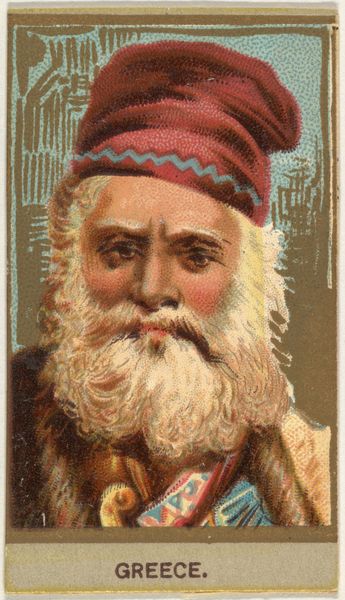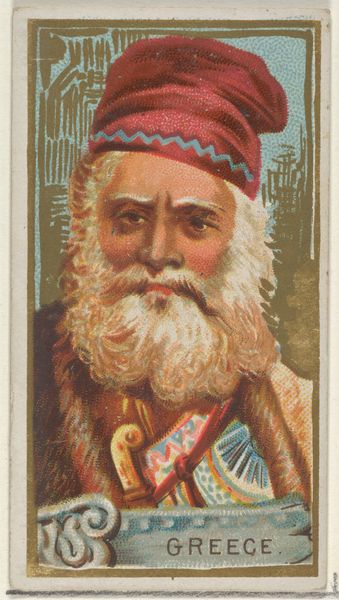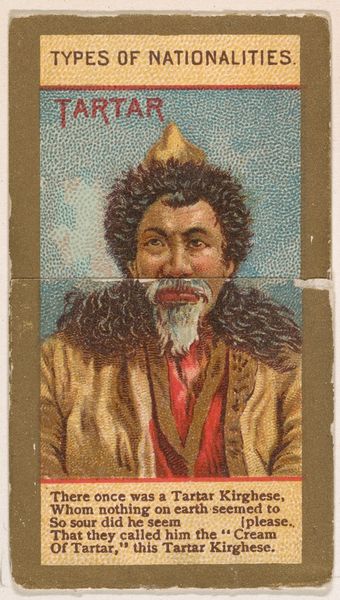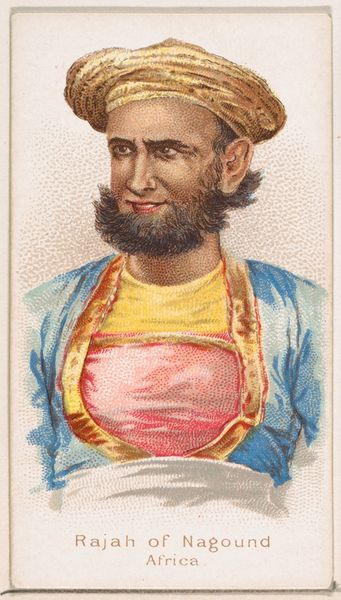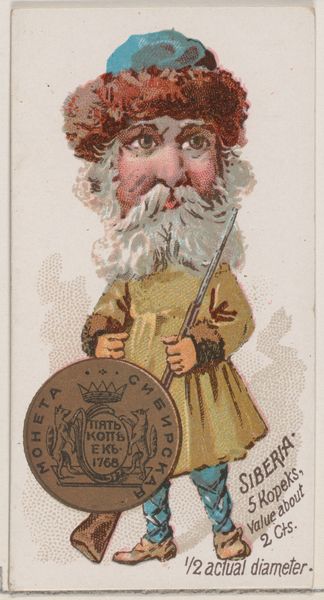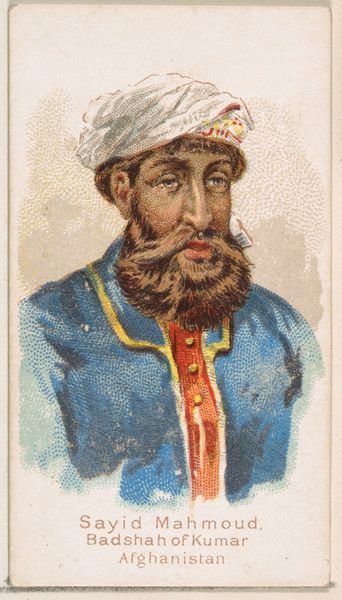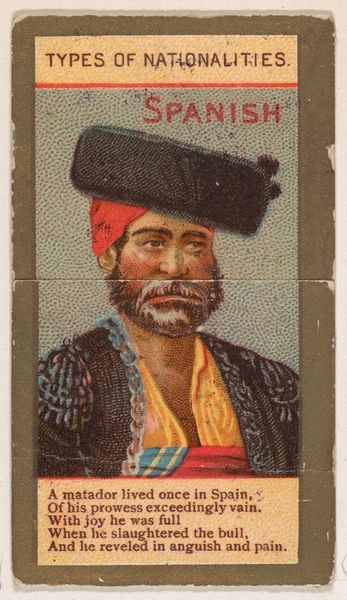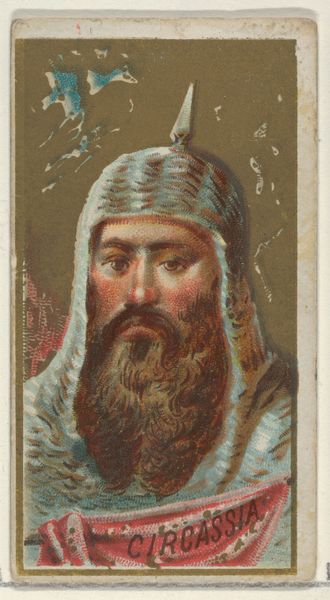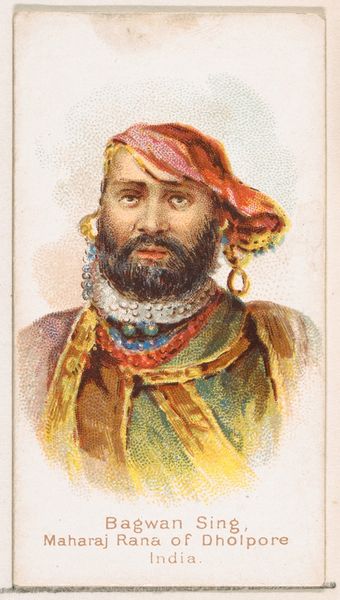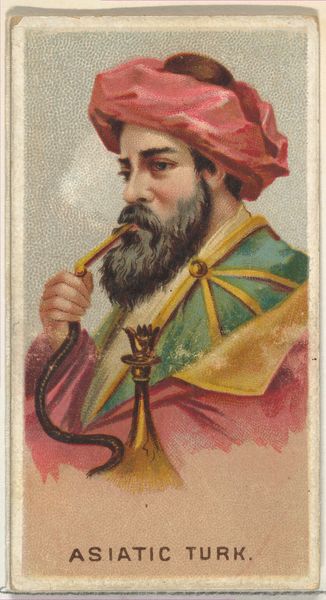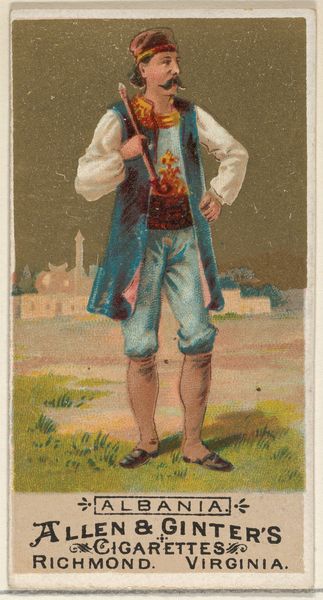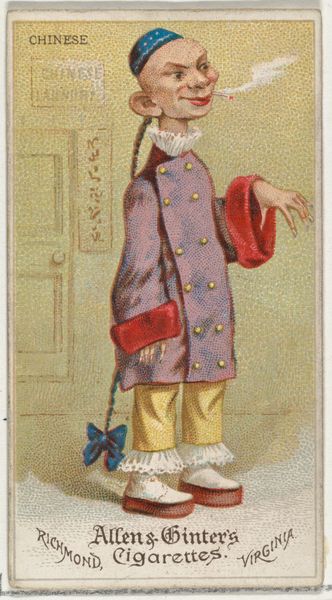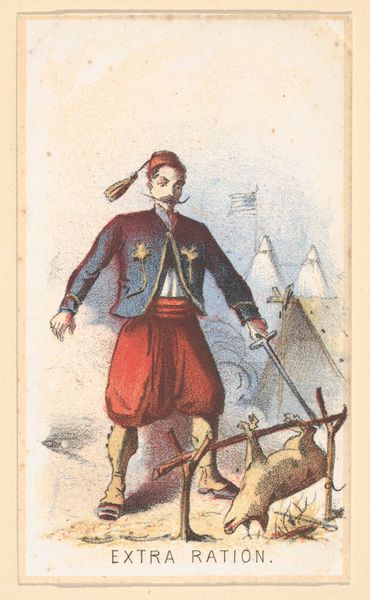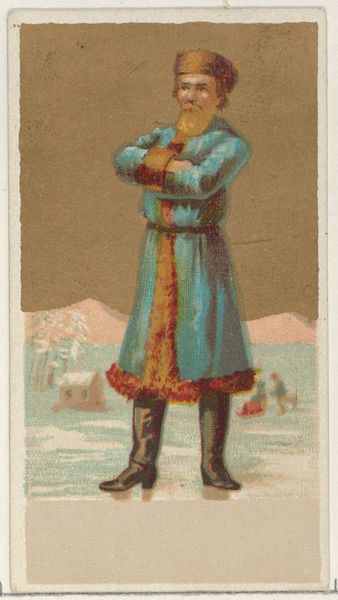
Wullie Mohamed, A Dahzungi Hagari, Afghanistan, from the Savage and Semi-Barbarous Chiefs and Rulers series (N189) issued by Wm. S. Kimball & Co. 1888
0:00
0:00
drawing, print, photography
#
portrait
#
drawing
# print
#
photography
#
orientalism
Dimensions: Sheet: 2 11/16 × 1 1/2 in. (6.8 × 3.8 cm)
Copyright: Public Domain
Editor: Here we have “Wullie Mohamed, A Dahzungi Hagari, Afghanistan” from 1888, made by William S. Kimball & Co. It’s a print that seems to blend drawing and photography, presenting a portrait within a series labeled “Savage and Semi-Barbarous Chiefs and Rulers.” It’s...striking, particularly in how it exoticizes the subject. What’s your take on it? Curator: Well, right off the bat, the "Savage and Semi-Barbarous" label stings, doesn't it? It's a perfect little encapsulation of 19th-century Orientalism. It reeks of cultural arrogance, casting judgment with such bluntness. But then I start thinking, beyond the offensiveness, about intent, and consumption of these images. It’s a photographically-sourced print in the guise of a portrait - What sort of "truth" is intended, do you think, here? Is it about capturing an individual, or reinforcing a stereotype? Editor: That's a powerful question. It makes me wonder if the artist even saw Wullie Mohamed, or if it’s a second-hand depiction reinforcing a biased narrative. It feels less like a study of a person and more like propaganda. Curator: Propaganda feels like a loaded term, but I hear you. These images were essentially trading cards, inserts in cigarette packs. They’re these bite-sized encounters with "the other", packaged for easy consumption. What did the viewers even make of it all? Did the striking outfit, and implied fierceness provoke fear, curiosity, desire… perhaps all three at once? Editor: It's wild to think of this as casual entertainment. Knowing its purpose sheds new light. It also helps to reflect on how images and intentions intertwine. Curator: Absolutely! I feel my viewing is far more alert to the many layers of assumptions embedded in this little card, it really exposes how potent and, I dare say, toxic stereotypes are born. And even propagated. It reminds us to be constantly questioning what stories we’re telling, and why.
Comments
No comments
Be the first to comment and join the conversation on the ultimate creative platform.
